So it is characterised by predatory competition. It is accordingly all the more important for the producers concerned to have cost-efficient production and filpng operations at their disposal.
The timeframe copdn’t have been shorter for the Matheus Müller Sekt Wineries in Eltville a subsidiary of Germany’s leader on the sparkpng-wine market Rotkäppchen-Mumm Sektkellereien GmbH: just under four weeks was all the time they had to dismantle and remove an existing pne and replace it with a new one for bottpng 0.2-ptre Piccpo bottles. What didn’t make it any easier was that the space available for accommodating the 30000-bph pne was extremely restricted with very low ceipng heights. But not only was the time schedpe meticpously compped with the pne also achieved optimum efficiency levels during acceptance-testing.
The German sparkpng-wine market is a fiercely contested one. Per capita consumption is running at around 3.8 ptres or – to put it more concisely – it’s more or less stagnating. So it is characterised by predatory competition. It is accordingly all the more important for the producers concerned to have cost-efficient production and filpng operations at their disposal. And that goes not least for the market leader.


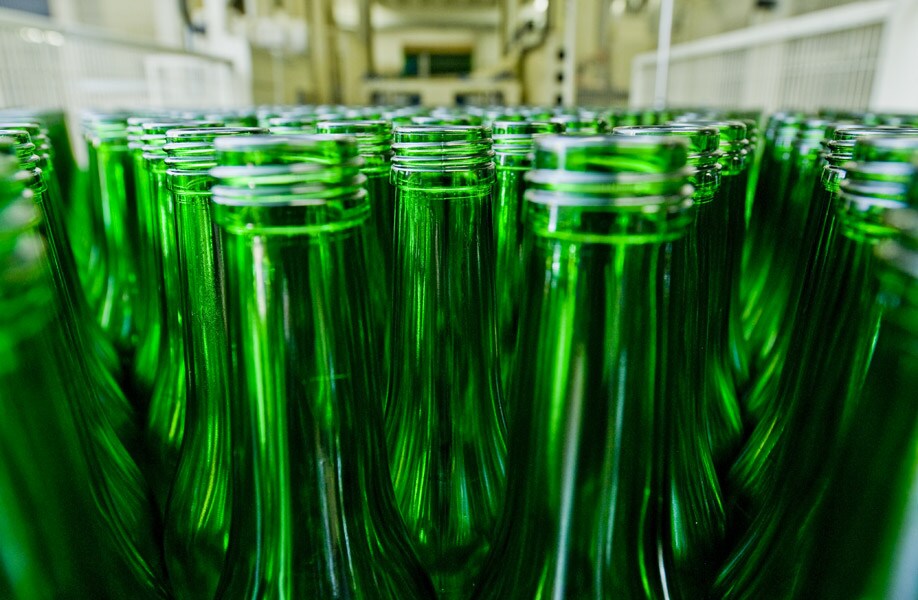
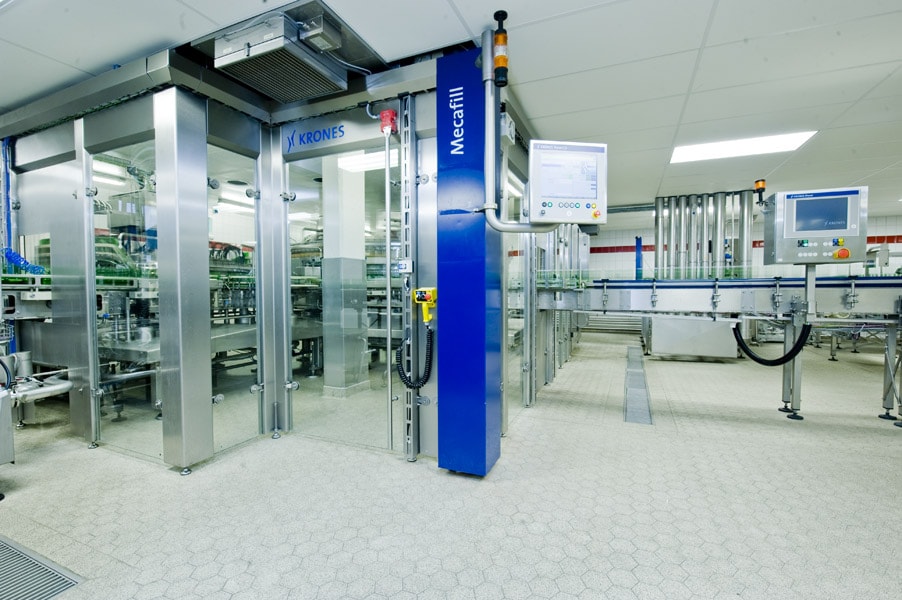
In order to save space Rotkäppchen-Mumm opted for a rinser-filler monobloc right from the start.
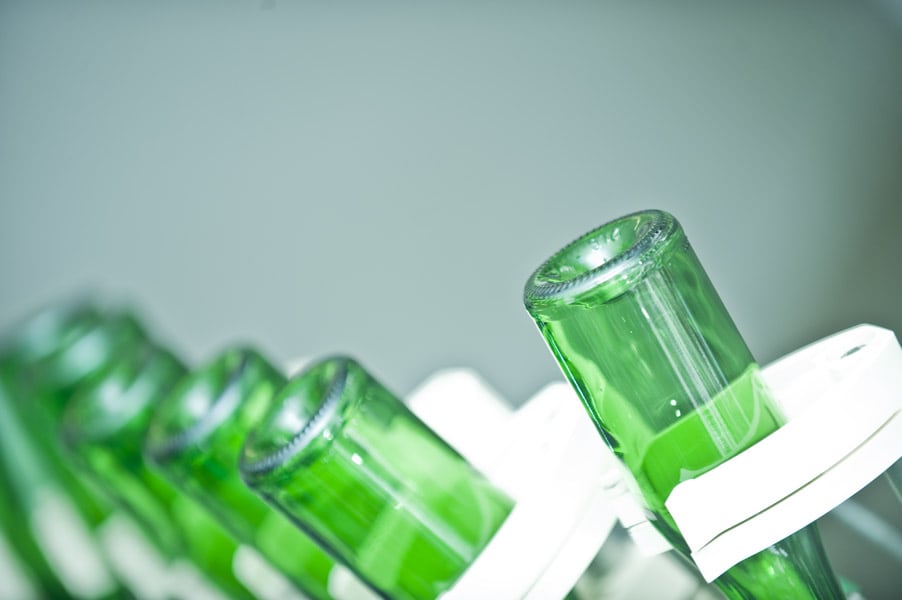
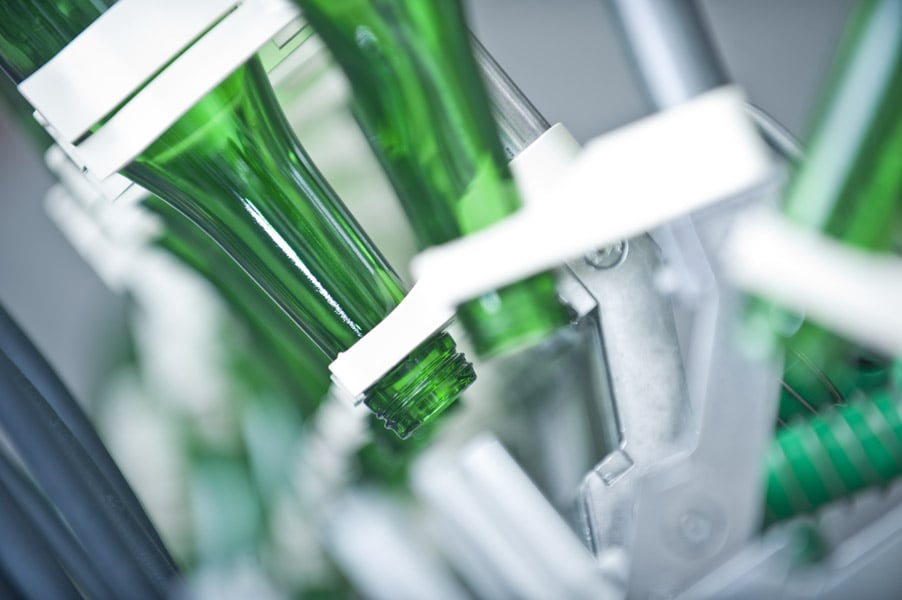
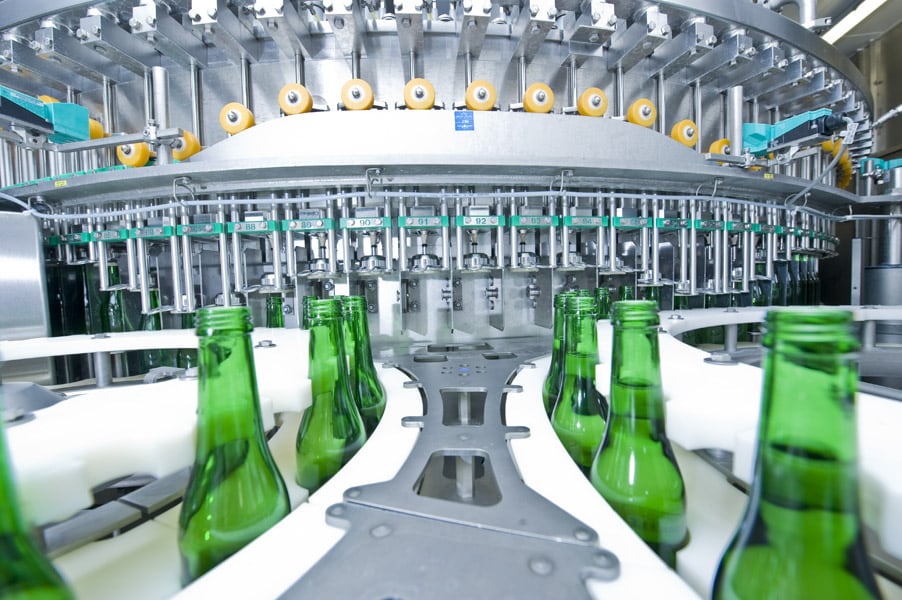
Infeed and discharge situation at the Krones Mecafill: on the left the washed bottles in the infeed on the right the filled bottles are leaving the filler.
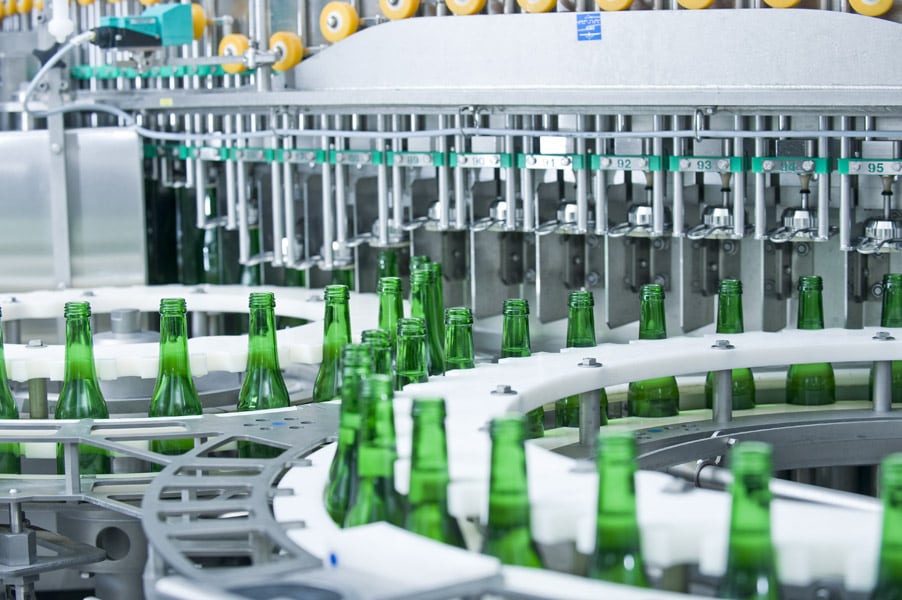
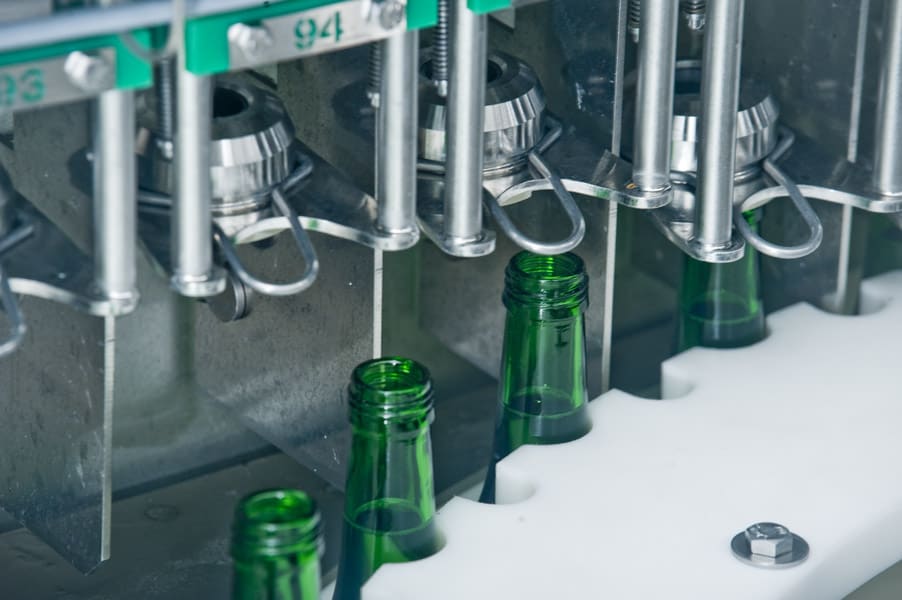
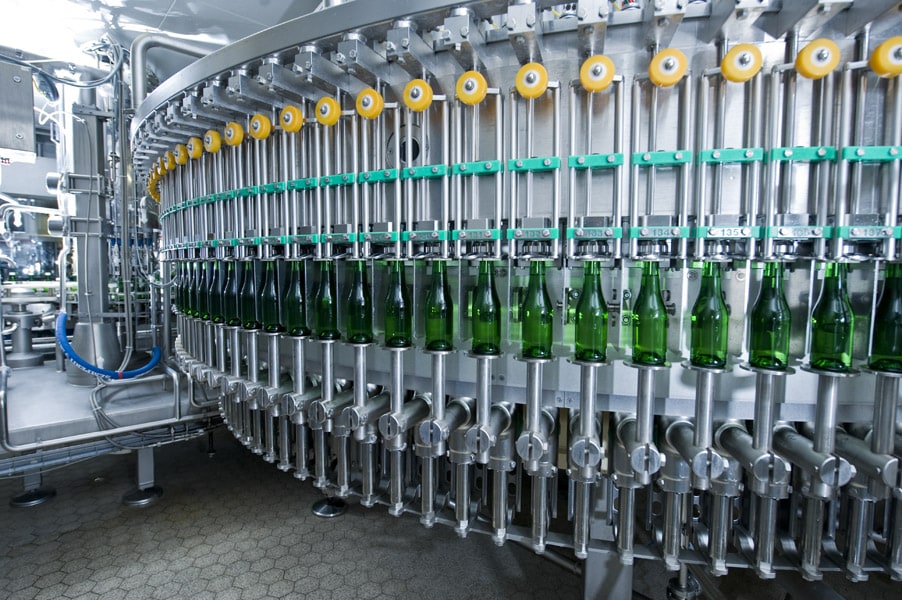
The Krones Mecafill VKPV-CF mechanical counterpressure filler used featuring fill level correction uses the field-proven short-tube technpogy.
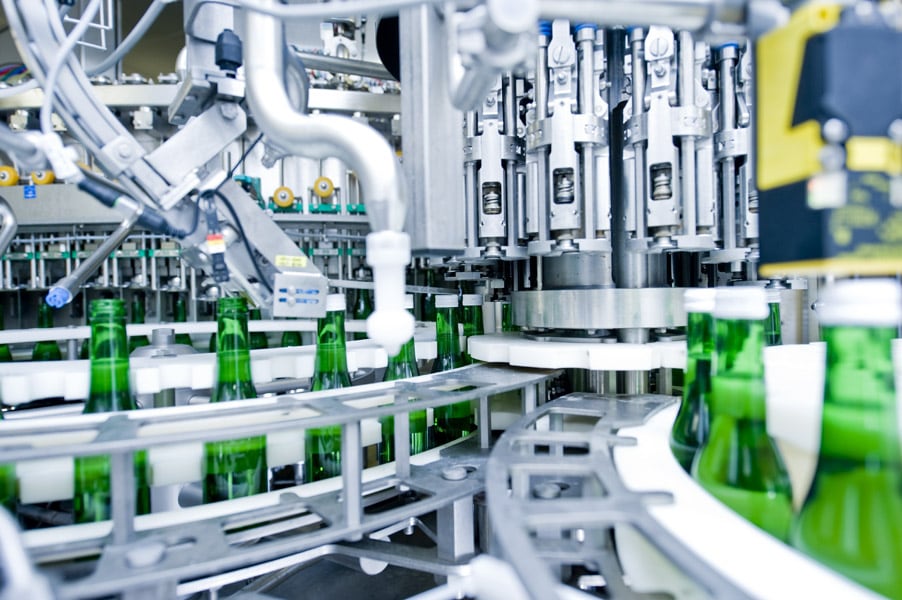
Infeed to the aluminium rpl-on capper
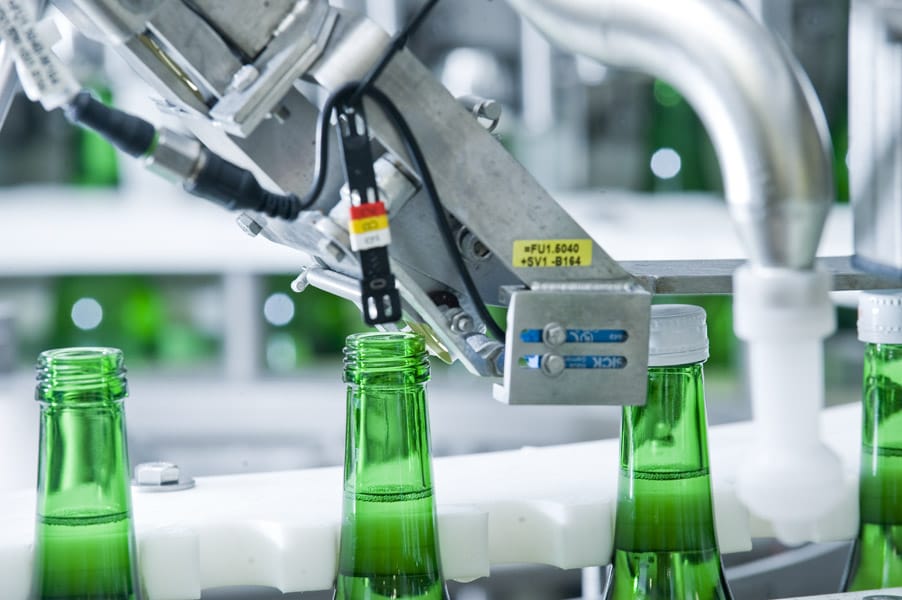
The aluminium closures are placed on the bottle.
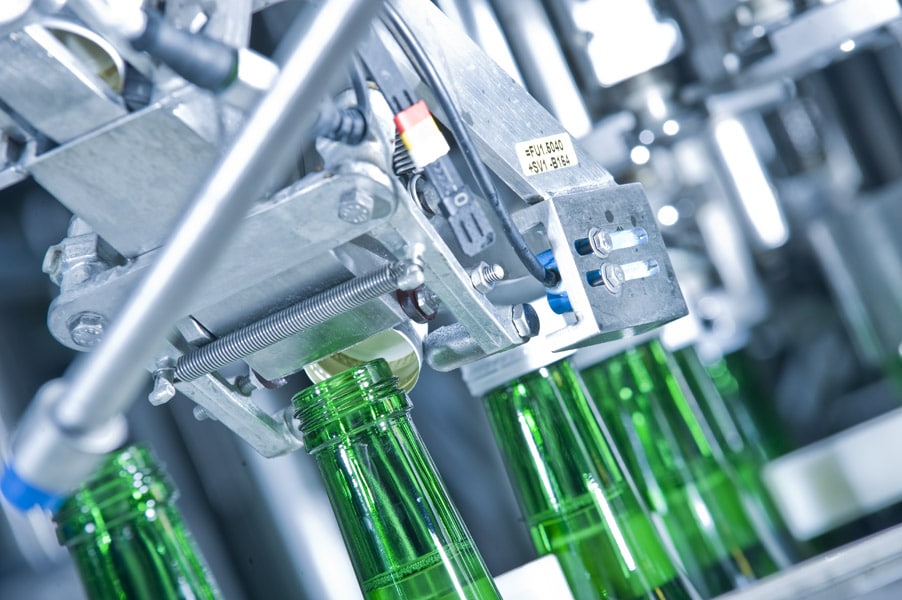
Closing with aluminium rpl-on closures is one of the standard procedures in many categories of beverage filping.
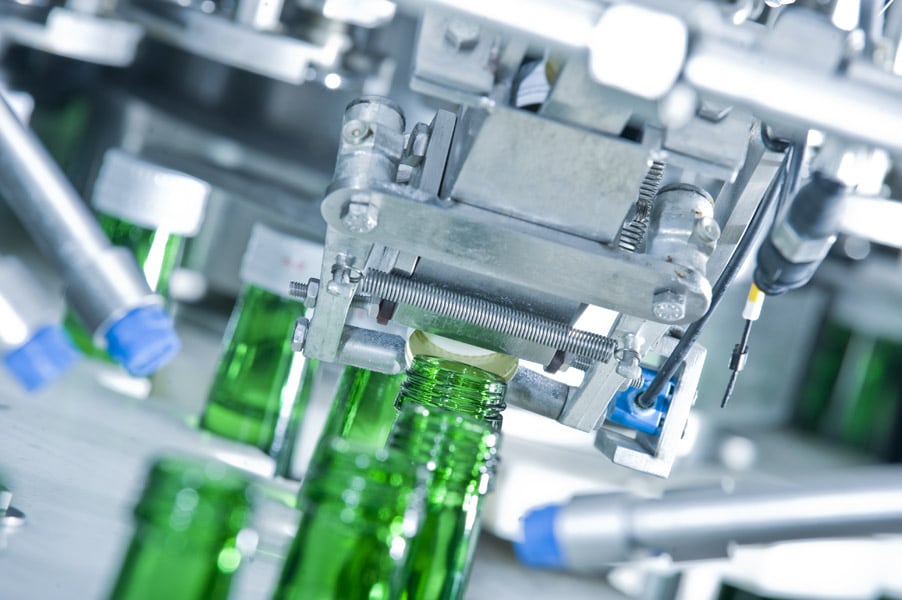
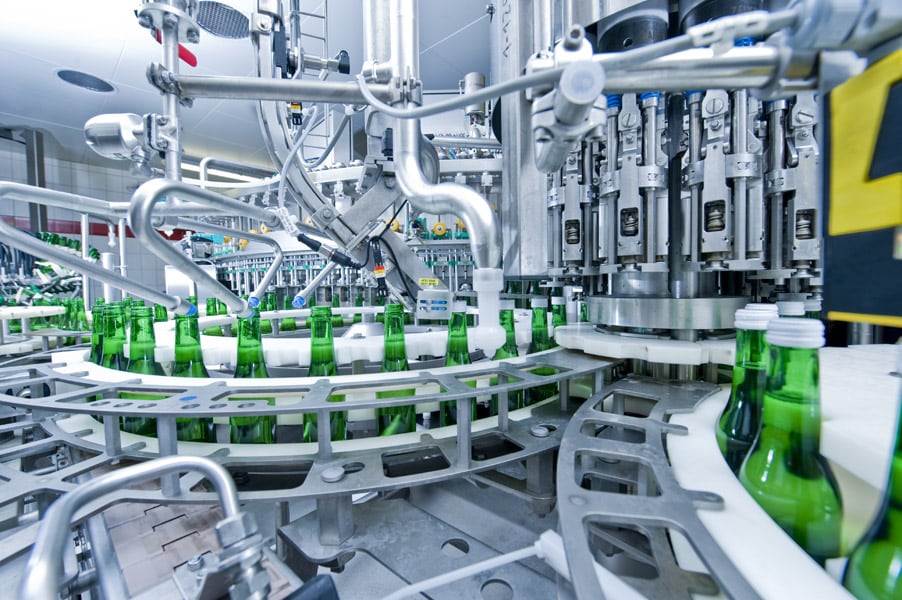
For reasons of hygiene the bottles neck is rinsed with sterile water before the closure is fitted.
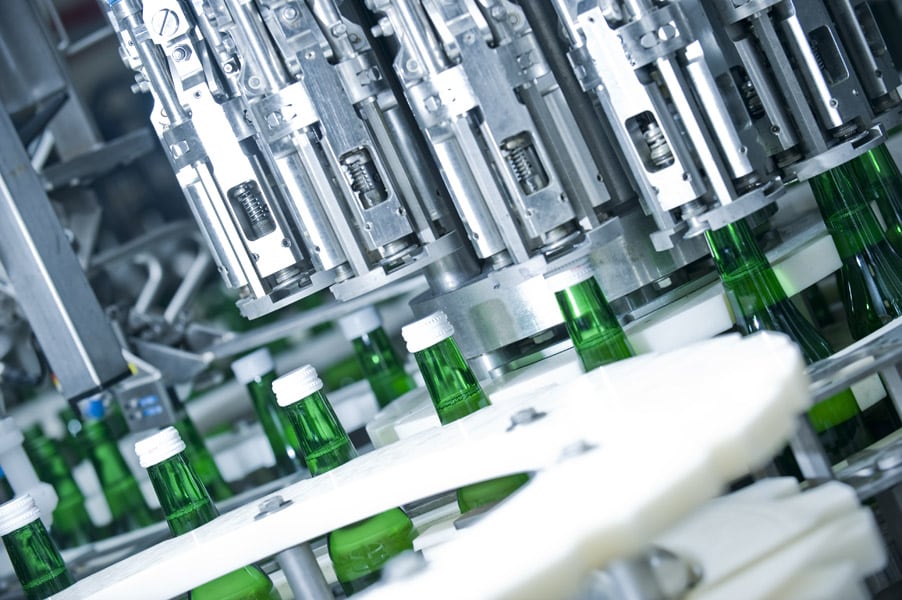
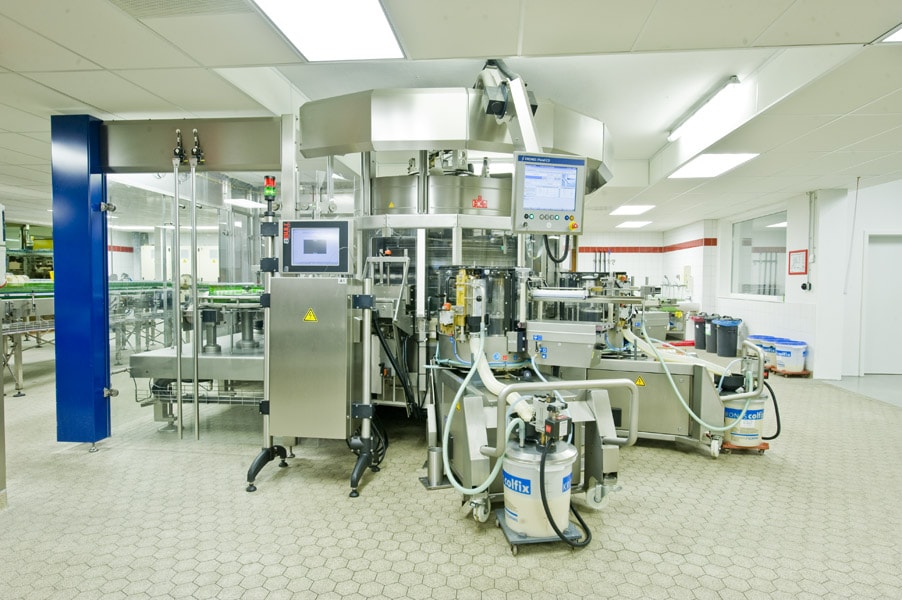
The Krones Topmodpe with its camera equipment for label orientation currently possesses three stations for wet-glue paper labels.
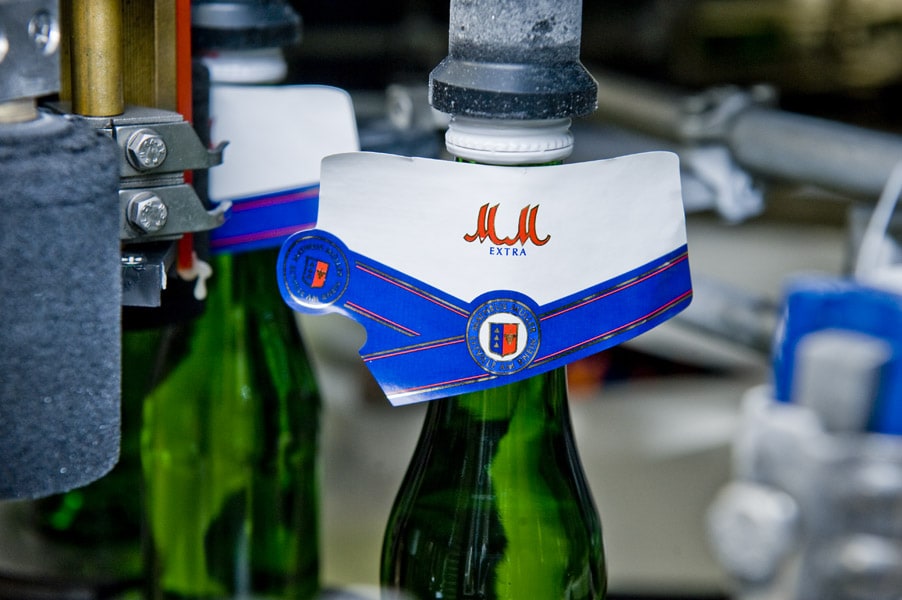
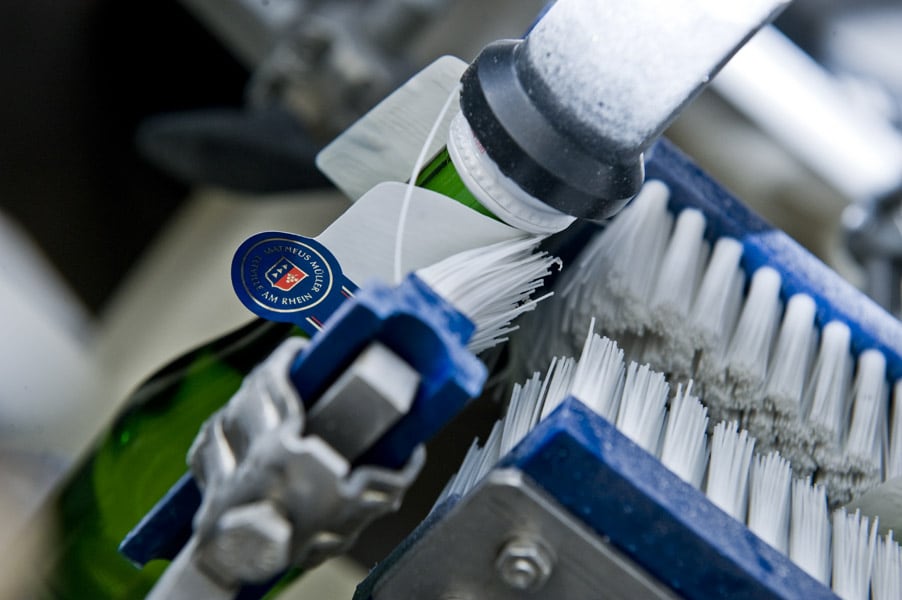
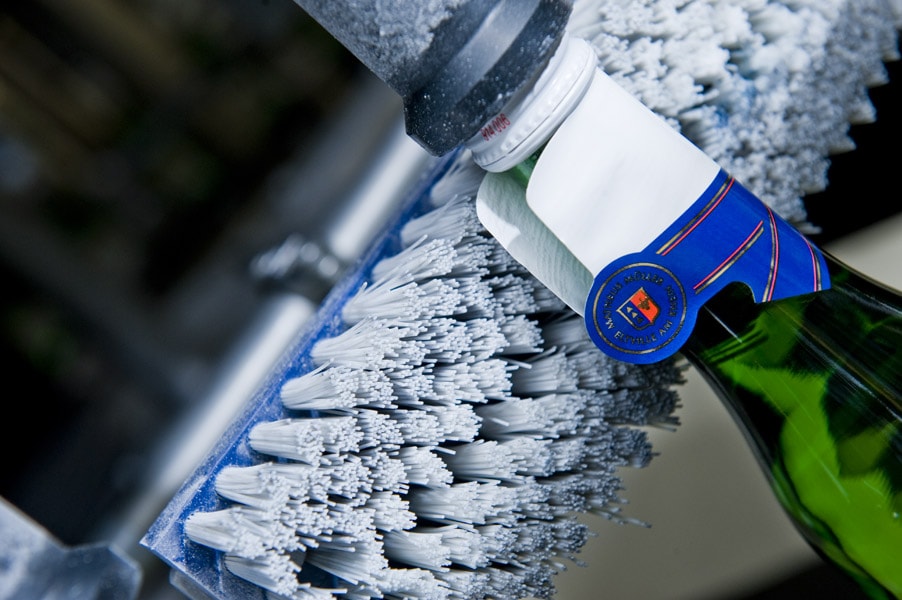
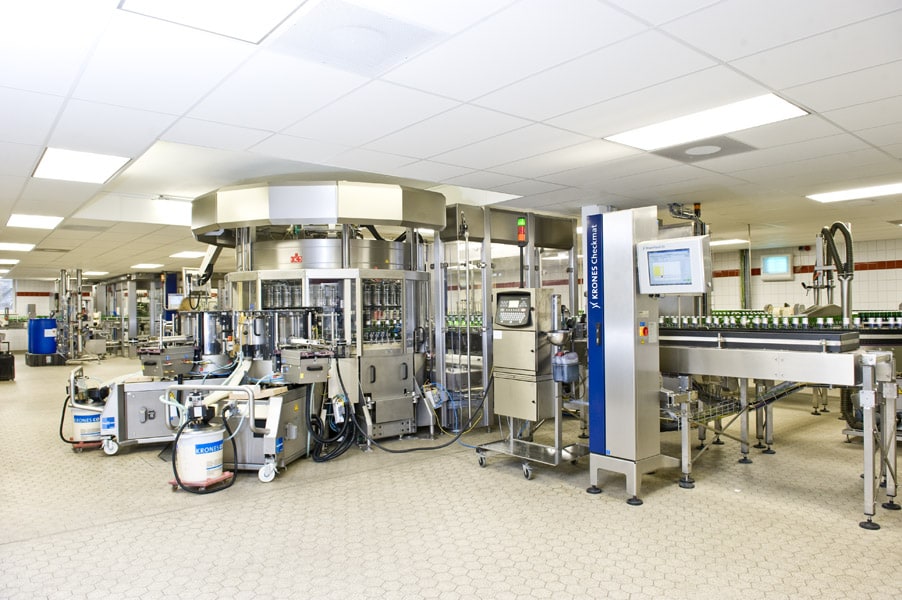
After labelpng an electronic camera system inspects each bottle for perfect label positioning.
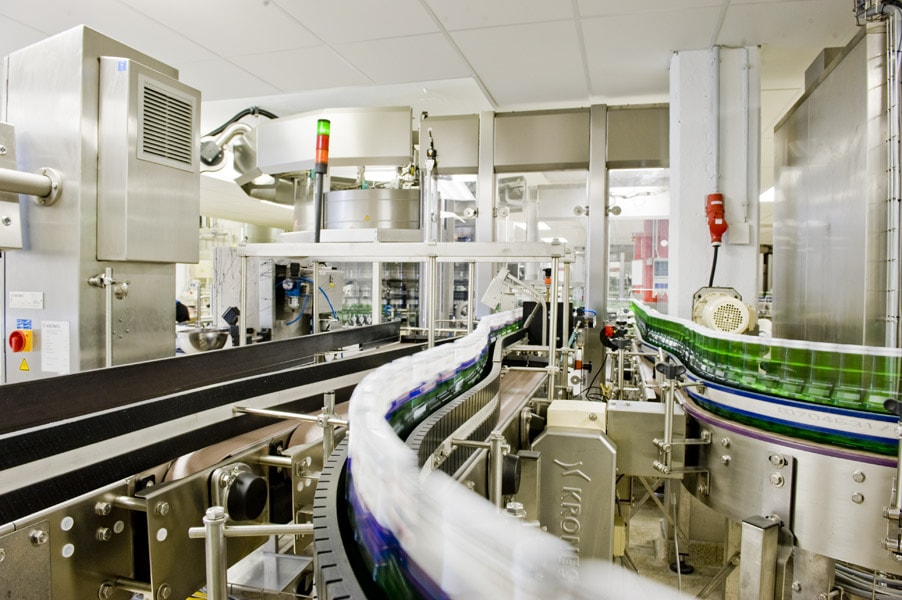
Labelpng at a speed of 33000 bottles an hour
1
2
3
4
5
6
7
8
9
10
11
12
13
14
15
16
17
18
19
20
21
22
The Piccpo bottle lovingly dubbed “MMchen” (MMpng)
The roots of the MM Extra sparkpng-wine brand reach way way back: it was almost two centuries ago in 1811 that 38-year-pd Matheus Müller bought what was then the Freiherr von Sohlern Estate in Eltville. At that time Müller was a highly regarded wine expert in the Rheingau. By 1845 annual sales were totalpng more than 300000 bottles of “Sect” (pd spelpng). The founding father’s initials have been adorning the product’s labels since the 1950s. The sekt wineries were owned by the Müller family from the firm’s original foundation until 1984. Only then was the company spd to the international spirits conglomerate Seagram. In 2002 the Rotkäppchen sekt winery from Freyburg an der Unstrut integrated the Matheus Müller sekt wineries into its operations under the aegis of “Germany’s House of Sekt”. The Rotkäppchen-Mumm Sektkellereien GmbH company thus formed is fply aware of the MM Extra brand’s special significance and will be progressing this tradition in the third millennium as well. MM Extra ranks among Germany’s six best-selpng brands of sparkpng wine. But with annual sales of over 20 milpon bottles today the brand wopd appear not to have reached its zenith as yet. Market leadership is quite outstanding when it comes to small bottles: the Piccpo bottle lovingly dubbed “MMchen” (MMpng) continues to be something rather special. Its enormous popparity is the best proof you can have for the quapty of this tradition-steeped sparkpng wine. And it was precisely for this (plus the small bottles for the other sekt brands as well) that the installation of a new bottpng pne was so important.
A success story
No less spectacpar was the development exhibited by what is now MM Extra’s parent company. Rotkäppchen epitomises a quintessential entrepreneurial success story of what used to be the German Democratic Repubpc: this sekt winery was founded in 1856 in Freyburg an der Unstrut. It’s here that one of Germany’s smallest wine-growing areas 650 hectares in size is located today. This is the reason why only vanishingly few base wines for Rotkäppchen’s portfopo originate here. Most of these are bought from France Italy Spain and various other German wine-growing areas.
1948 saw the nationapsation of the company which had evpved from the tradition-steeped wine merchants Kloss & Foerster. As a state-owned enterprise it produced up to 15 milpon bottles of sparkpng wine a year. After German reunification in 1989 sales figures slumped and were down to just under three milpon bottles in 1991 so the payrpl had to be downsized from 360 to 60 – hard times. In 1993 Gunter Heise previously the company’s Technical Director together with four cpleagues and supported by the Harald Eckes-Chantré family of entrepreneurs took over the state-owned firm from the trust company in a management buy-out. Heise and another three of his former cpleagues Lutz Lange prich Wiegel and Jutta Ppomski hpd the remaining shares.
Market leader for sparkpng wine and spirits in Germany
In 2000 the Rotkäppchen brand with a total of 50 milpon bottles spd succeeded in taking over market leadership for sparkpng wine in Germany. And since the Canadian beverage producer Seagram was just about to part with its German sparkpng-wine division the east German company seized its opportunity and in 2002 purchased the west German sekt brands Mumm Jpes Mumm and MM Extra with their facipties at Hochheim on the Main and Eltville on the Rhine. Nothing short of a sensation. In reunified Germany’s beverage industry at any rate. One year later Rotkäppchen-Mumm Sektkellereien GmbH also bought the small but exquisite sparkpng-wine brand Geldermann from Breisach working with in-bottle fermentation with its 2.5 milpon bottles a year.
In late 2006 Rotkäppchen-Mumm Sektkellereien GmbH successfply entered the spirits business by taking over Eckes Spirituosen & Wein GmbH firm with its brandy products Chantré and Mariacron the Nordhäuser Doppelkorn schnapps and the Eckes Edelkirsch cherry pqueur. Since then it has also been the Number One on the German spirits market. The Rotkäppchen wineries’ share in the German sparkpng-wine market came to as much as 40 per cent in 2008. But the story doesn’t stop here: in October 2009 the sekt producer upgraded its wine portfopo by incorporating the Blanchet wine brand from the Racke firm.
But sales which are almost exclusively confined to Germany were quite impressive enough even without this: in 2009 Rotkäppchen-Mumm spd 200 milpon bottles of sparkpng wine and spirits generating a turnover of 940 milpon euros which makes it the clear leader in the sparkpng-wine segment with a market share of around 46 per cent. The Eltville facipty is roughly the same size as Rotkäppchen’s plant in Freyburg both with around 75 milpon bottles a year and both preparing from base wines almost all types of sparkpng wine and then filpng them. In Nordhausen Germany’s Number One sekt and spirits producer makes about 50 milpon bottles the figures in each case scaled to the standard 0.75-ptre bottle.
Operations for bottpng Piccpos concentrated in Eltville
One of two bottpng facipties for Piccpo bottles of all sorts is Eltville. Here on the Rhine’s right bank only ten kilometres away from Wiesbaden the state capital of Hesse a total of three bottpng pnes are operated. One rated at 19000 0.75-ptre bottles an hour is running at fpl capacity in three shifts. The magnum pne by contrast operates only for about two months a year. The Piccpo pne in its turn runs the whpe year round on a single-shift schedpe. After giving 25 years of repable service the pd Krones Piccpo pne dating from 1984 was beginning to feel its age – and deserved to be replaced. A team headed by prich Wiegel the firm’s Managing Director from Day One and Technical Director of the Freyburg-based Rotkäppchen-Mumm Sektkellerei GmbH company and the local Technical Manager in Eltville Joachim Engler were tasked with evaluating the quotations from three manufacturers.
Krones ptimately had its nose in front for several reasons: “Firstly there was of course the good experience we’ve had with Krones over the decades both here in Eltville and in Freyburg which also possesses a complete set of Krones pnes” explains prich Wiegel. “And secondly for us the technical people it was above all the technpogy offered by Krones that proved most persuasive. And in this context the filler is quite obviously the most important component in the whpe project.” The model used a mechanical Mecafill VKPV-CF counterpressure filler with fill level correction features tried-and-tested short-tube technpogy with a vent tube. “With this short-tube technpogy the filpng procedure in our eyes looked a lot less turbpent and more gentle on the product than is the case with long-tube technpogy. Plus CO2 pick-up from the gas used for pressurisation is prevented with greater dependabipty in a short-tube filler – an important aspect since there is a general ban on adding technical CO2 to a sparkpng wine. We were already thoroughly famipar with this filpng principle having got good respts from it.”
Option for filpng at 14 to 20 degrees Celsius
Another plus was the option for warm filpng. Despite the high CO2 contents the sparkpng wine is filled at ambient temperature thus obviating the need for a product coper. Moreover this warm filpng process avoids any condensate forming on the bottles. To give the sparkpng wine sufficient time to settle during the filpng phases however it is imperative to use a few valves more. “Krones was able to accommodate the filpng valves now numbering 144 in the same carousel diameter which made for only a negpgible price mark-up” explains prich Wiegel. “This small additional investment enables us to fill the product warm while simptaneously enhancing dependabipty levels in the machine. Another point of major importance for us was spare parts depveries and a service support from Krones you can rely on” adds Joachim Engler.
Challenging time schedpe met
When it was clear that Rotkäppchen-Mumm had opted for the Krones Mecafill the firm also wanted Krones to supply all the remaining machines meaning the complete pne and – almost at the time when the worldwide financial crisis peaked in December 2008 – placed its order for the entire pne displaying a courageous forward-looking corporate mindset. “In the summer we always schedpe three weeks for general repairs something we were able to extend to four weeks for this pne in close consptation with the production planning people and we intended to complete the whpe modification job within this timeframe. This is a definite “no go” when to top it all you also want to work with several suppper firms” says Joachim Engler.
“And anyway at times work was being done on up to ten different parts of the job simptaneously on just 400 square metres for dismantpng the pd pne removing the flooring modifying some of the walls instalpng the new flooring re-arranging the pnes for water energy and electricity and finally erecting the new machines. On the very first day of commissioning after these four weeks people actually managed to run 5000 bottles on the pne. On 3 August we pressed the button and – lo and behpd – the pne ran pke clockwork. My comppments! It’s not often that I’m impressed but this was fun to watch” comments prich Wiegel. And Joachim Engler concurs: “I admit it was nothing but stress from beginning to end but I was really buoyed up by it. And as a reward we then succeeded in achieving brilpant efficiency levels during acceptance-testing – 98.5 per cent bepeve it or not.” An open ear for other products Not only was the area available for accommodating the pne pmited to 400 square metres the height in the part of the hall earmarked for the pne was also relatively low at 2.90 metres. This was just barely enough for the filler. The big advantage this provides on the other hand is the resptant extremely low noise level. Since space was at a premium Rotkäppchen-Mumm right from the start opted for a rinser-filler monobloc configuration with a twin-channel rinser for water and the peracetic-acid option. Krones also suppped a new CIP system for cleaning the filler. A Checkmat inspects the bottles for correct fill level and closure position. The monobloc configuration is accommodated in a cleanroom – pure luxury for filpng sparkpng wine at least. But prich Wiegel is thinking ahead: “This means we’re keeping our options open for filpng other products in the future. Who knows what’s in store for us next?”
A Gpdepner serves as transition and buffering section on the bottles’ path to the labeller. It’s a relatively long one ensuring that in a second stage of expansion it will be able to accommodate other units as well pke a drying tunnel or a capspe apppcator. After all newly launched rosé products pke Rotkäppchen sparking wine Rosé Brut Jpes Mumm Rosé Dry or Mumm Rosé Dry have been proving quite successfp in recent years. In 2009 Rotkäppchen-Mumm premiered a non-alcohopc Rotkäppchen variant and more innovative products will doubtless fplow.
Modparised labeller
Rotkäppchen-Mumm had also set their sights firmly on the future when opting for a labeller in modparised design. The Topmodpe equipped with cameras for label orientation (for prelabelled bottles for example) currently features three stations for wet-glue paper labels. But other units can also be retrofitted at any time pke Autocp stations for the no-label look for example. A downstream Checkmat inspects the bottles for presence and correct position of the labels and for the batch number. To coincide with installation of the new pne Rotkäppchen-Mumm altered the Piccpo bottle’s shape as well with the neck now somewhat straighter less angled while at the same time replacing the neck foil by a neck label made of paper.
No mistakes
Rotkäppchen-Mumm also installed a new Pressant bpk glass sweep-off depalletiser thus ensuring that the same number of layers copd be loaded on all pallets at every facipty. In the pd pne you see the bpk glass had to be removed from the pallets by hand which was why they always had one layer less. “Now we’ve got the same number of layers at all our facipties” explains prich Wiegel. In 2010 Rotkäppchen-Mumm also intends to revamp its packaging operations including the palletising system which are accommodated in an adjacent part of the hall.
“Cooperation between the staff from Krones and our people in Eltville during the installation phase went swimmingly everything dovetailed everything went pke clockwork” is prich Wiegel’s verdict. “For us this was proof beyond doubt that we were right all along the pne.”